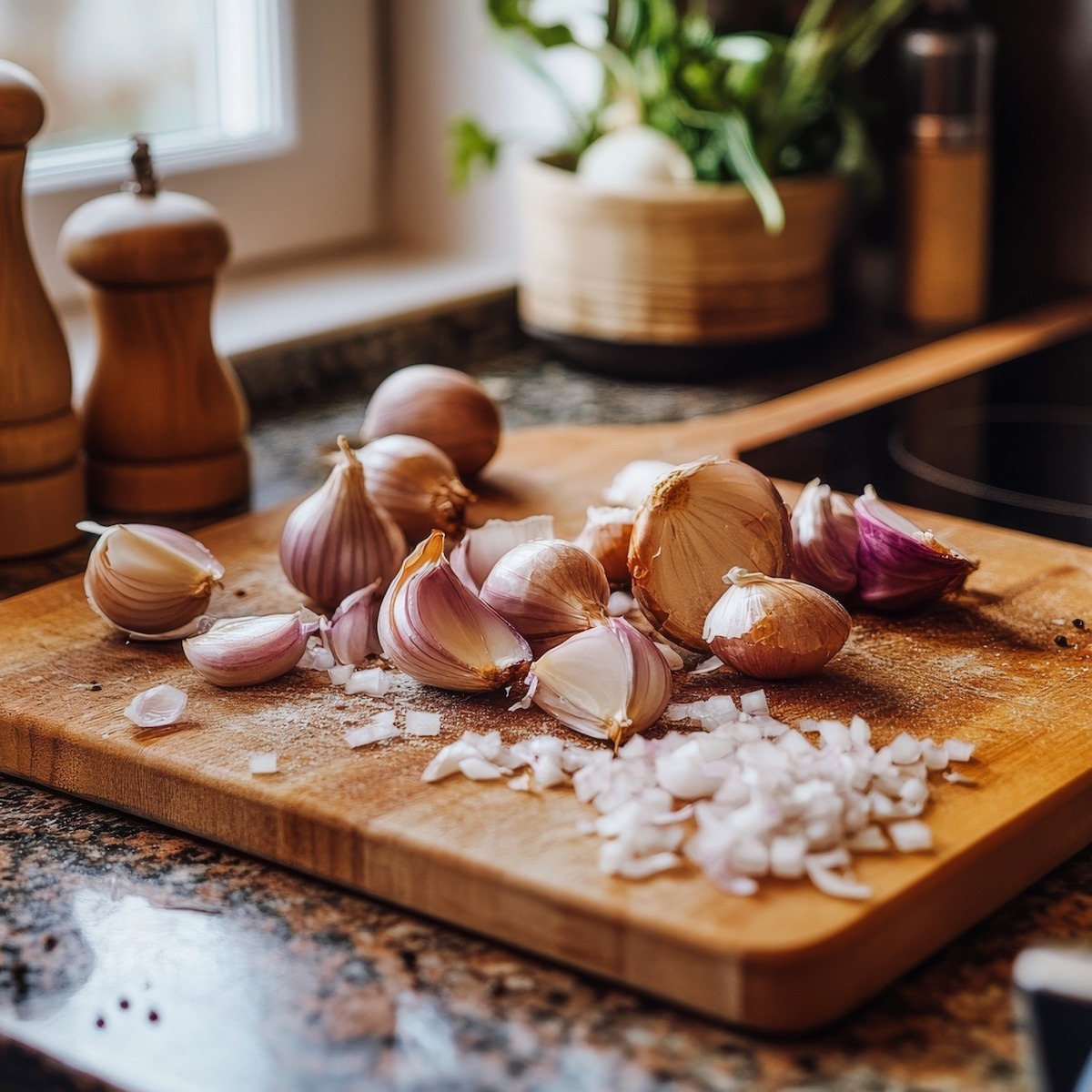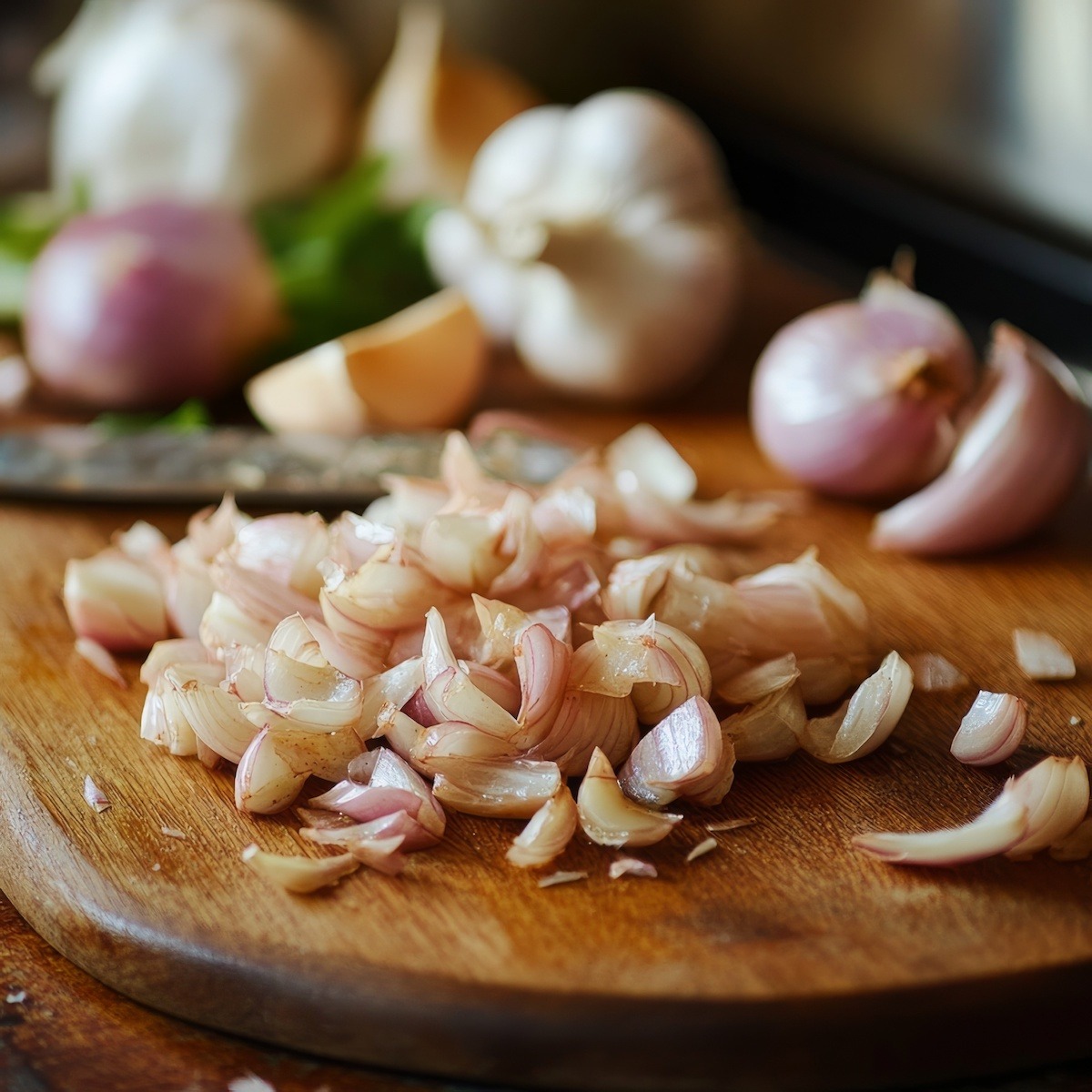

The Shallot Advantage: Flavor, History, and How to Cook with Them
Shallots, often mistaken for onions due to their similar appearance, have a delicate, sweet flavor that sets them apart as a culinary favorite. Their origins trace back to Central and Southwest Asia, where they have been cultivated for centuries. The shallot made its way to Europe in the Middle Ages, brought by returning Crusaders who discovered them in the ancient city of Ascalon, now in modern-day Israel. This is where the shallot derives its name.
Today, shallots are cherished by chefs around the world for their subtlety and versatility. Unlike onions, shallots have a milder, more complex taste with hints of garlic. They can be used raw in vinaigrettes, finely chopped and added to sauces, or slowly caramelized to enhance their natural sweetness.
Cooking with shallots is a delightful way to elevate a dish. They work beautifully in various recipes, from classic French cuisine to modern fusion dishes.
Shallots pair particularly well with vinegar and herbs like thyme and rosemary, a key ingredient in beurre blanc sauce. Whether sautéed, roasted, or raw, shallots add depth and a nuanced sweetness that can transform a meal from ordinary to extraordinary.
History of Shallots
The history of shallots stretches back thousands of years and is rooted in the regions of Central and Southwest Asia. They are believed to have originated around present-day Iran, Afghanistan, and Pakistan. From there, shallots spread throughout the ancient world, becoming particularly popular in the Mediterranean and the Middle East.
The name “shallot” is thought to be derived from the ancient city of Ascalon (modern-day Ashkelon in Israel). During the Crusades in the 12th century, European crusaders discovered this flavorful bulb and brought it back to Europe, where it became a beloved ingredient in many cuisines.
Shallots thrived in Europe, particularly France, where they became a staple in classic French cooking. In French cuisine, shallots are prized for their delicate flavor, which is less pungent than onions but still offers a rich, aromatic quality.
Over the centuries, shallots spread across the globe and became integrated into various culinary traditions. They have also played a role in traditional medicine, particularly in Asia, where they were used for their purported medicinal properties, including aiding digestion and boosting the immune system. Today, shallots are popular worldwide, valued for their versatility and refined flavor.
Compared to Onions
Shallots and onions are often compared due to their similar appearance, but they differ significantly in flavor, texture, and culinary applications. Here’s a breakdown of their fundamental differences:
- Flavor: Shallots have a milder, sweeter, and more delicate flavor than onions. They possess a nuanced taste that combines the sharpness of onions with a hint of garlic. This makes shallots ideal for dishes that require a more subtle, less overpowering flavor. Onions, conversely, have a stronger, more pungent taste that can dominate a dish.
- Texture: Shallots have a finer, more delicate texture than onions, making them perfect for raw preparations like vinaigrettes or garnishes. They also break down more easily when cooked, resulting in a smoother consistency. Onions tend to have a firmer texture, holding up better in dishes that require long cooking times, such as stews and soups.
- Size and Shape: Shallots are typically smaller and more elongated than onions, often growing in clusters of bulbs. Onions are larger and more spherical, with a single bulb.
- Culinary Use: Shallots are often used when a recipe calls for a refined flavor, such as in sauces, dressings, or delicate dishes. Onions are more versatile and are used in a broader range of dishes, from sautéing and caramelizing to serving as the base for soups and stews.
While both vegetables belong to the allium family, their distinct qualities allow them to shine in different culinary contexts.

They Make You Cry
Yes, they can make you cry when you chop them, although typically to a lesser degree than onions. Like onions, shallots contain sulfur compounds that are released when they are cut. These compounds form a gas called syn-Propanethial-S-oxide, which irritates the eyes and causes them to water.
However, the tear-inducing effect is usually less intense because they have a milder flavor and contain slightly fewer sulfur compounds than onions. Some people find that chopping shallots produces less eye irritation, but it can still happen, especially if you’re chopping a large quantity.
To reduce the likelihood of tears, you can try chilling the shallots in the refrigerator for about 15 minutes before chopping. This slows down the release of the sulfur compounds. Another tip is to use a very sharp knife, which causes less cell damage and reduces the amount of gas released.
Why Use A Shallot Instead of An Onion?
You would use a shallot instead of an onion when you want a subtler, sweeter flavor and a more delicate texture in your dish. Here are some specific scenarios where shallots are the better choice:
- Dressings and Vinaigrettes: Shallots are perfect for raw preparations like salad dressings and vinaigrettes, where their mild flavor won’t overpower the other ingredients.
- Sauces: Shallots shine in delicate sauces, such as beurre blanc, where a strong onion flavor would be too harsh. Their sweetness and refined taste elevate the sauce without overwhelming it.
- Delicate Garnishes: When finely chopped, shallots can be used as a garnish in dishes where a stronger onion might be too aggressive, such as in certain seafood dishes or alongside fresh herbs.
- Egg Dishes: Shallots work well in omelets, quiches, or frittatas, providing a gentle onion flavor without overpowering the dish.
- Delicate Meats: For lighter meats like fish, chicken, or veal, shallots offer a more balanced flavor than onions, complementing the dish rather than overpowering it.
- Caramelizing for Flavor Depth: Shallots can be caramelized to add a subtle sweetness and depth to dishes like risottos, tartlets, or even sandwiches.
Shallots add complexity and sophistication in these instances, making them ideal when you want the essence of onion without its intensity.
Five Fun Facts About Shallots
- Botanical Double Identity: Shallots are botanically closer to garlic than to onions! Although they resemble onions in appearance and flavor, shallots grow in clusters like garlic, with multiple bulbs attached at the base.
- Ancient Symbolism: In ancient Persia, shallots were considered a symbol of good fortune and were often included in New Year’s celebrations to represent abundance and prosperity.
- Medicinal Uses: Beyond their culinary applications, shallots have been used in traditional medicine for centuries. In Southeast Asia, their antimicrobial properties were believed to help treat colds, boost digestion, and even ward off infections.
- Longer Shelf Life: Shallots have a longer shelf life than most onions. When stored properly in a cool, dark, and dry place, they can last up to six months without spoiling, making them a great pantry staple.
- Unique Antioxidant Profile: Shallots contain higher concentrations of antioxidants than regular onions. They are particularly rich in flavonoids and phenolic compounds, contributing to their health benefits, such as reducing inflammation and supporting heart health.
These fun facts highlight the versatility and fascinating history of shallots, making them even more intriguing to use in your kitchen!
Some Recipes with Shallots
Pan Fried Chicken Breasts with Shallots and Garlic Recipe
Some of My Favorite Ingredients
 Print
Print




